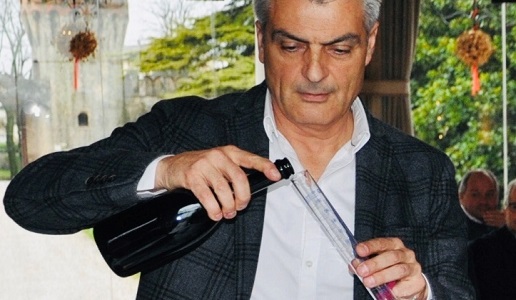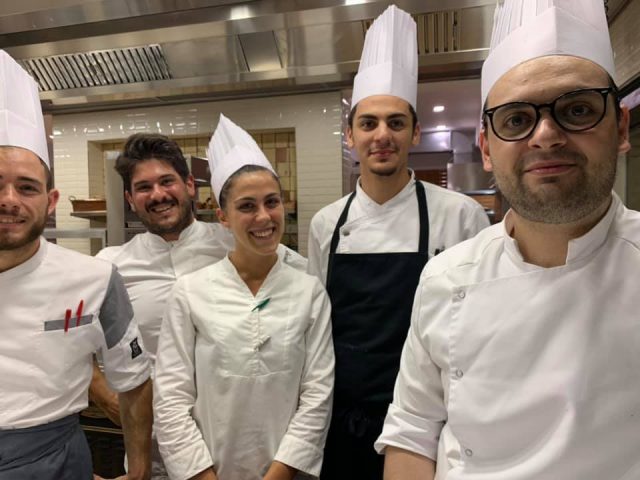Winemaker Pride

Exactly one year ago, Umberto Trombelli, the renowned enologist and student of the great Giacomo Tacis, posted an article that, for me, could represent a manifesto of winemaker pride.
We re-publish this article on DoctorWine because there is not one word in it that I do not disagree with and because I do not want to see certain concepts to be forgotten.
“Ignorance causes more harm that yeasts and sulfites”.
Following the recent appearance of some arguments and comments on the social media, I felt it necessary to go into depth on some issues I particularly care about and which should not be ignored.
An interview was recently published with a winemaker and supporter of natural wines who took issue with those natural wine producers who consider organoleptic defects as a distinctive symbol of a wine’s naturalness and territoriality.
At the same time, while defending competent management in the winery, he expressed his opposition to the use of selected yeasts and/or other additives in the winemaking process.
The bottom line of the article was, more or less, that maintaining the defects of a wine, just as the use of additives or select yeasts, altered the originality of a wine and its relationship with the land. This point of view, which was among the less radical in circulation, is becoming a prime talking point among many wine lovers along with so-called experts who fuel dissent and seem to put wine entrepreneurs and enologists on trial.
In my 30 years as a working enologist, I have been able to acquire a profound knowledge of winemaking techniques with grapes cultivated using organic, biodynamic and conventional methods. This includes winemaking without the use of sulfites or without using selected yeasts as well as the so-called “industrial” wines and wines sold with sediments at the bottom of the bottle. Although I do have a certain experience, I do not consider myself to be a universal expert nor to know all there is to know. In fact, I am so passionate about my work that I continue to study the subject because there are still too many things that Science cannot explain concerning the fermentation and conservation of wine.
It is painful for me to see enology criticized in general by those who know nothing about it. And so, as an enologist, I was happy to finally hear a producer of natural wine recognize defects for what they are: something that does not express a territory but vilifies it. However, there are many, including some leading opinion-makers, who exalt these defects and consider them a measuring stick to discover new rising stars. A defect, as an illustrious colleague once said, can be identified anywhere and any place and so aside from being something negative it is also a measure of standardization. These are not new considerations. Over the years, wines have been degraded because a producer bottled them without controlling the wine first. Thus it was possible to buy or order a wine that had undergone malolactic fermentation in the bottle or secondary fermentation due to some overlooked sugar residue. However, it would appear to be a crime to criticize this and one risks being branded as a barbarian or cretin for doing this.
While I agree on the need to recognize a defect as a defect, I do not share the opinion that a wine, to be considered original and representative of a territory, must be made without the use of additives. I also recognize the fact that the use of additives can be excessive in mass produced wines and oppose this. However, if one were to look at the ABCs of winemaking, the chemical, biological and other phenomenon behind the transformation that creates wine, then they must accept that this biological process needs to be guided by man. The natural evolution of a grape is that which begins with the seed and leads to the ripening of the fruit, while wine is a regulated product that man has sought and produced.
Wine does not exist in Nature except for a brief moment in the biological decay of the grape.
Grapes produced in a vineyard situated in a suited area are what make the difference. A native varietal is an added asset but only if it is well selected and cultivated.
The use of selected yeasts, those that have been identified as quick and reliable accelerants for fermentation; the use of malolactic bacteria, better yet if conserved in the cellar from the previous year; and the use of sulfites in a correct and non-invasive way, is not wrong. The use of barriques and other wood containers has a precise purpose: to naturally mature, soften and stabilize a wine, not to give the wine a wood taste!
These are all techniques and means that man has developed over the centuries to improve and make wine more enjoyable. I see nothing wrong in this and, in fact, consider it an ideal way to enhance the value of a wine on the condition that careful and targeted winegrowing procedures were followed to create an indissoluble rapport between a wine and the land.
This is the challenge that Italy faces in the future: to establish a position on the global market by connecting wines with the territory they are produced in and link this with Italy’s history, its wine and food and cultural heritage. Today, more than ever, it is important to have a common and shared awareness to maintain a position on an increasingly difficult and complex market. Believing that the problem is the use of selected yeasts is out of date and counterproductive.
While it is true that certain yeasts have been developed that can characterize the composition of a wine’s bouquet, it is also true that many others exist that are only good for fermentation and have no effect on the original characteristics of the grape. The choice of yeasts is vast. Just imagine what the production of Champagne or sparkling wine anywhere in the world would be without selected yeasts. These yeasts were developed specifically to achieve that wine result without altering it but rather to enhance it.
The producers of “natural” wines depend on “spontaneous” yeasts that develop in the winery. These are microorganisms that developed in the winery (and not the vineyard) that come alive when they come into contact with the must to then return dormant after the harvest. There does not exist in a winery a single yeast that can initiate and complete the fermentation process, not even selected yeasts can do this.
One wonders whether those who believe the opposite have ever carried out microbiological research on yeasts to ascertain what are and what are the origins are.
What I can tell them is that were they to carry out such studies, genetically mapping “Indigenous” yeasts, they would find that these yeasts can be also be found commercially for winemaking. They would find the common Saccharomyces Cerevisiae, microorganisms belonging to the vegetal world, a fungi and fermentation catalyst. They would also find that apiculate yeasts, those considered “not good” and even “dangerous”, become so under certain environmental conditions because they prefer to eat things other than sugars and this is a problem that nine times out of ten creates a defect.
They would thus simply discover that they don’t know what they’re talking about.
As I said earlier, I have made and matured wine without using sulfites on different occasions. This has allowed me to conclude that it can be done but the result is a wine without much personality quality-wise. Due to oxidation, the aromas dissipate making the wines less significant than traditional ones. There does not exist today a procedure that allows for producing quality wine, above all wine that can age, without the use of this complex additive that serves as an antiseptic, a preservative and stabilizer. And what about cost? Not using sulfites means using other additives including tannins, more tannins and still more tannins. This is not possible with white wines.
It’s true: added sulfites are bothersome and toxic. However, if used appropriately, they are not as bothersome as some make them out to be. In recent years, the legal limit on their use has declined and this trend will continue as producers learn to manage them better. However, at present it is impossible to work without them. To those who oppose their use, I would like to ask whether they consume shellfish, mustard, vegetables conserved in oil or vinegar, sauces and other similar products. Have they ever wondered how many sulfites are contained in these preserved foods? And when calculating the daily allowed amount of sulfites are those contained in food every taken into account?
Why are there those who think that research and development and those who seek to apply the results of these are dangerous, speculating terrorists seeking to poison others?
I am an enologist who tries to enhance the value of my clients’ wines by focusing on the particular characteristics of the grapes that are cultivated in a particular area. I use as few additives as possible and only when necessary. There is no common trait between all the wines I have worked with, from the north to the south of Italy. Thus I do not consider myself an “alchemist”, at most a good “pilot” who uses the tools offered by Science to do his job as best as possible.
I also consider myself lucky.
Not all my colleagues can say the same because on the wine market there are not just famous wines, there are also many normal wines, those to drink every day, like you would beer. And this because there are consumers who would like to drink a good wine every once in a while not paying too much attention to whether it is a Cabernet or a Sangiovese. There are novice wine lovers who before working up to an important wine need to educate their palate by drinking simple wines. And simple wines are anything but poison. They are wines made from grapes. Their musts are fermented using modern and reliable techniques that also involve authorized food additives and catalysts in order to obtain even “perfect” and “enjoyable” wines. So what’s the problem?
Should we abandon this market?
Should we tell thousands of sector workers to change their ways just because someone they do not know and who is not informed has decided they are doing something unacceptable? That they are working in a business that is anti-Nature?
How absurd!
Italy is the world’s leading wine producer and must view wine from all its quality and market perspectives.
There is nothing wrong if Technology allows us to keep costs down and become more competitive even in the lower-price sector. There is room for everyone on the market and our intent should be to always seek to improve. To fight over a handful of yeast for me is a only a distraction, a way to find a scapegoat rather than tackle important questions.
In conclusion, I would like to underscore that my reflections here are for the benefit of those who approach the world of wine with passion and competence and with whom I would like to interact in a constructive way.

 Italiano
Italiano








